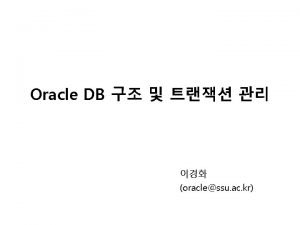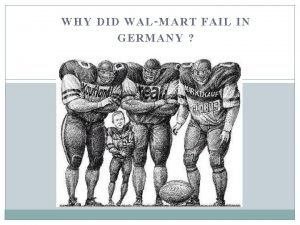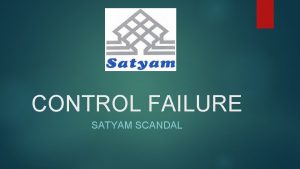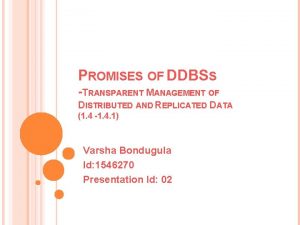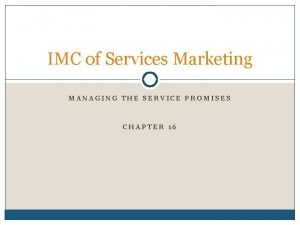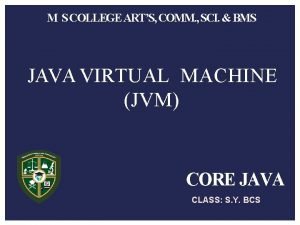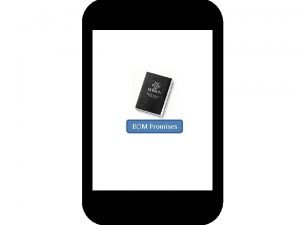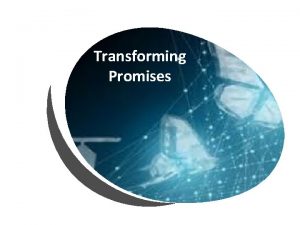Unfulfilled Promises Why IT Failed to Transform the


















- Slides: 18

Unfulfilled Promises : Why IT Failed to Transform the UK Reinsurance Industry Nikolaos Pisanias and Michael G. Jacobides London Business School Geneva, June 2 nd , 2006 Page 1

The existing challenge: Costly and inefficient processes § Property and casualty insurers spend 35% of their combined ratios in transaction and administration costs (Mc. Kinsey report, 2000) § Policies processed annually by top 10 brokers: 4 million Re-processed due to keying errors: 1. 5 million (37. 5%) (Insider Quarterly, Autumn 2002) 2

Great expectations: What ICT was supposed to do § Improved efficiency – Brokers using the inreon platform would save up to 25% of their costs – – 10% coming from the underwriting, negotiation and settlement phases 15% coming from the ongoing administration, claims management, and technical accounting. (Insurance Newslink, Jan. 2002) § Competitiveness – "Insurers who fail to adopt the required technology by the end of 2002, could face to lose 40% of their market value. " (Goldman Sachs-Mc. Kinsey report, 2002) § Disintermediation – Brokers commissions average 10% for what some saw as "just pushing paper". 3

Proliferation of electronic exchanges § § § 10/1996 CATEX launched (ISDN version) 11/1998 CATEX launches Internet-based exchange 11/1999 El. Ri. X launched 12/1999 dot. Risk founded 05/2000 City 3 K launched 12/2000 inreon launched 01/2001 Re. Way founded 05/2001 e. Reinsure launched 02/2001 Risk 2 Risk launched 04/2001 reinsurer. com launched 04/2001 My. Reinsurance. com launched 4

Demise of electronic exchanges § § § § 06/2001 Risk Transfer Exchange acquired by inreon 09/2001 City 3 K re-launched as RI 3 K 11/2001 Re. Way ready to be launched 12/2001 Re. Way acquired by inreon 01/2002 dot. Risk closes down 06/2002 Lloyd's of London launch project Blue Mountain (later Kinnect) 05/2003 inreon announces that it will close down 09/2005 Lloyd's Kinnect in troubled waters. Future of project uncertain 5

The reality today § Very few transactions placed electronically (0. 5 – 0. 8%) § Most exchanges have closed down at great loss § Waste of money – Lloyd's Kinnect – 2 nd largest broker : £ 70 m : £ 65 m § The few remaining companies have become mainly backoffice providers (e. g. CATEX and RI 3 K) § No signs of disintermediation 6

Methodology § Qualitative study - Ethnographic methods § Empirical material from original fieldwork and archival research § Fieldwork – 126 Interviews with – – – Brokers Underwriters IT managers – Participant observation research § Archival research – Comprehensive news databases – Trade publications – Industry reports 7

Why did the electronic exchanges fail? § Decisions to invest on electronic marketplaces were based on flawed theoretical frameworks. § Theories overestimated the potential impact of ICT. § Apparent failure of systems is partly the result of unfounded expectations. 8

In what ways were theories flawed? I. Expectations for industry change were based on an inappropriate conceptualization of how ICT can affect information flows and industry structure. - Narrow conceptualisation of information - Indirect association between information flows and organisational structuring II. Resistance to technological change was underappreciated; even if ICT had the capability to transform, it often did not. 9

Narrow conceptualisation of information § Focus is primarily on the more explicit, codified information. – Information that is less codified or more tacit is discussed only peripherally. § Information examined primarily in terms of its availability or its level of diffusion. – Issues related to its creation, and transformation are overlooked. § Analyses based on a technical view of communication. – Mechanistic view of transactions. – Dissemination through processes of social interaction ignored. 10

Example: Only codified information is recorded and hence managed § Internal BPR project in reinsurance department of major London broking house – Existing reinsurance process found to perform over 300 steps. – After detailed analysis the process was reduced to 70 steps. – Achieved significant cost savings. – Yet, this detailed process analysis omitted the most important aspect of brokers' function - the production phase. Why? – "Basically we couldn't model it. That's why we left it out. " (Project Manager) 11

Indirect association between information flows and organisational structuring § The effects of ICT on information flows are not adequately linked to the structuring of organisations. – Even when the effects of ICT on information flows are analysed, their association with institutional change is loose. § Singular view of ICT impact on organisational structures. – Distinct trajectories of change resulting from same technology are overlooked. 12

How do brokers add value? § Brokers add value : – by being in possession of information that is not widely diffused; – by structuring concrete, uncodified information through processes of codification and abstraction; – by being able to diffuse unstructured information in ways that technology cannot; – by being able to selectively structure such information. 13

Resistance to change § Resistance within industry (by firms): – Perceived threat of gradual erosion of market power, induces organisations to resist, slow down, or try to control the change. – Broking houses ignored or undermined the exchanges. § Resistance within organizations (by individuals): – The threat of job loss induces brokers to resist, or inhibit the introduction of the new technology. – ICT-induced efficiency not a priority in their personal agenda. – Conflicting objectives. – Even when broking houses joined, internal support was limited. 14

Example: Undermining ICT projects § "We were among the first London brokers to adopt it. The internal rationale was: If CATEX doesn't work, then something like CATEX in the future will work. So we would like to embrace CATEX to try to stifle it and kill it before it takes off […] And the argument was that if we were among the first in, and made quiet a song and dance about it, went around the market, educated the market about it, and then just …shelve it basically, CATEX would then stagnate. And with a new and initiative like that, you need to keep momentum going; so we would just take the momentum out of it completely. " (IT project manager, One. Broking. House) 15

Example: Conflicting objectives in firms § " In JLT the message from the top was that we will use this, we will go electronically! But the financial and economic reality was that as a broker you had to improve your business, you had to improve your revenues. So the business user, the guy on the street, had to chose between spending the extra time maybe double-keying, maybe trying to get his head around the new technology, trying to find markets that were willing to trade this way, and all the money and effort this required versus writing more business in his book, meeting his budget. And in fact the message came down every day as "Where is the revenue? ", rather than "Why aren't you using the technology? " " (JLT executive) 16

Implications for theory § Need to incorporate a broader conceptualisation of information in our theoretical frameworks. § Place emphasis on how social processes of information creation and exchange are responsible for organisational structures; and vice versa. 17

Implications for practice § Focus on Information – not only on Technology. § ICT is not always the bottleneck § Design ICT systems that can work together with the information processes which they cannot mediate. § Manage resistance to new information systems. 18
 Failed to execute 'fetch' on 'window': failed to parse url
Failed to execute 'fetch' on 'window': failed to parse url Why why why why
Why why why why Why walmart failed in germany
Why walmart failed in germany In which year satyam scandal occurred
In which year satyam scandal occurred Dont ask why why why
Dont ask why why why The new frontier fulfilled promises
The new frontier fulfilled promises Baptismal promises
Baptismal promises Solemn promises
Solemn promises Promises of distributed database system
Promises of distributed database system Managing service promises
Managing service promises Old testament promises
Old testament promises Managing service promises
Managing service promises Lasting service
Lasting service Believing in god's promises
Believing in god's promises Faraj promises
Faraj promises Manifesto for a head girl
Manifesto for a head girl Security promises of the jvm
Security promises of the jvm Notes receivable
Notes receivable Are god's promises conditional
Are god's promises conditional
